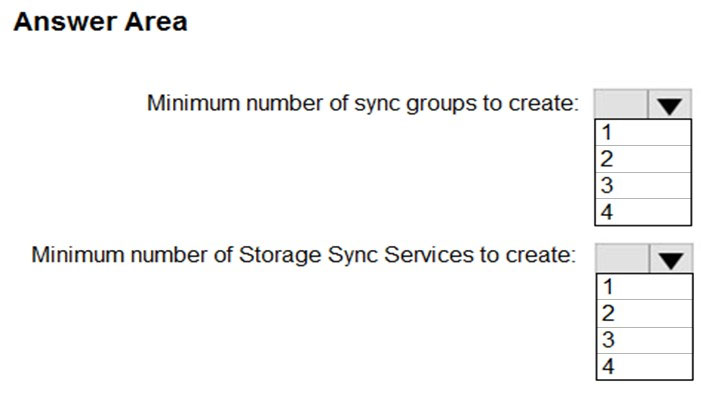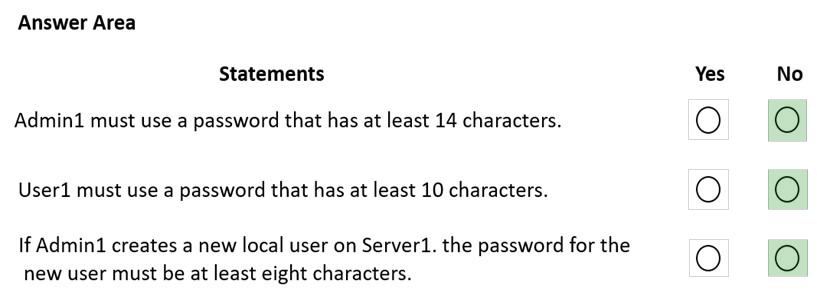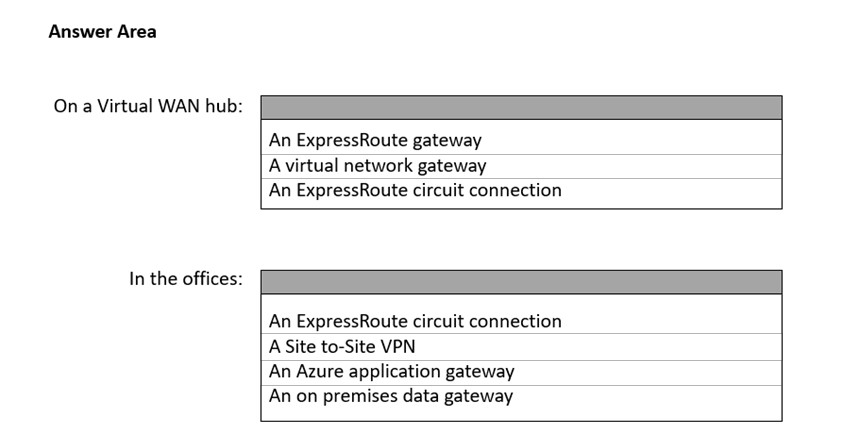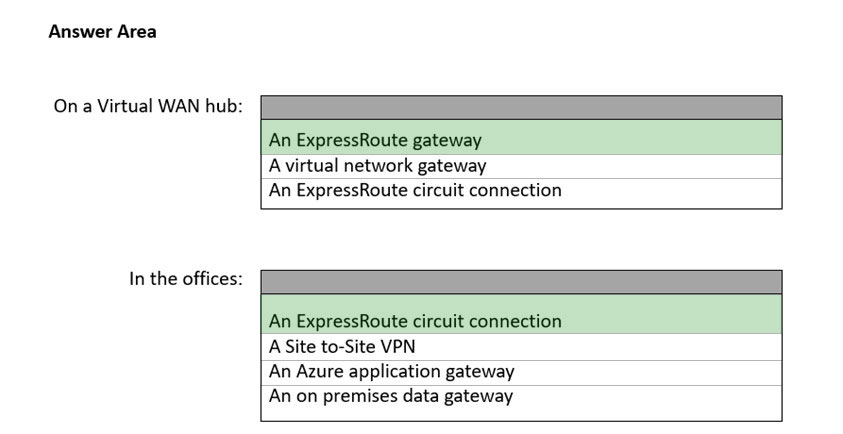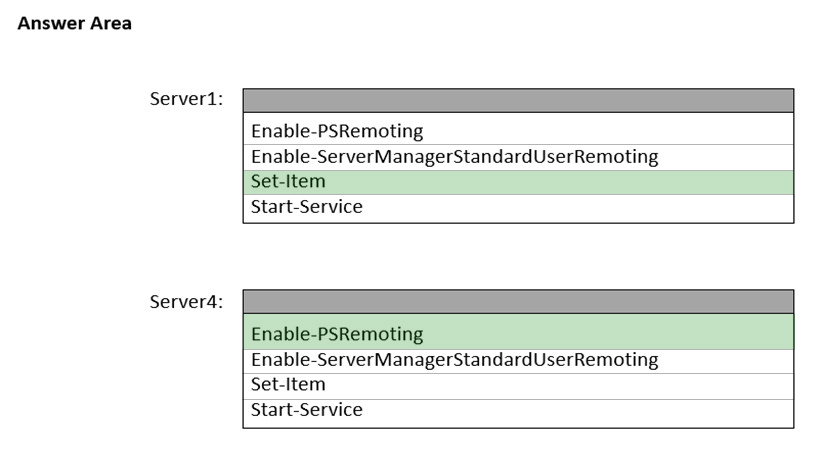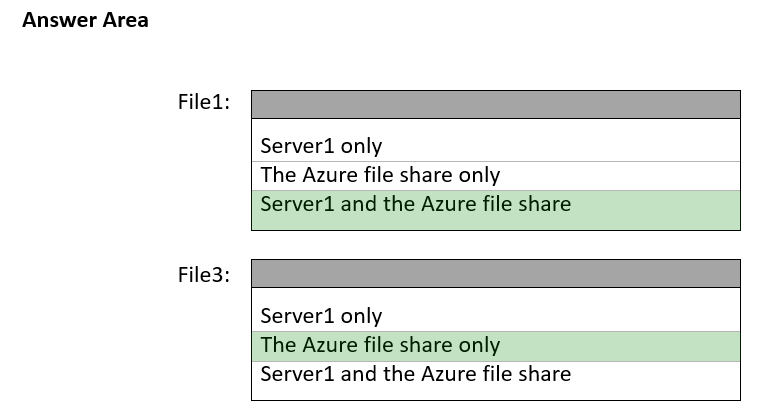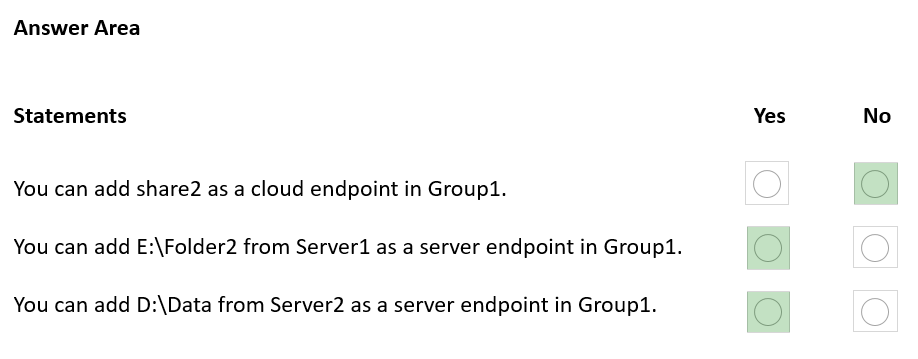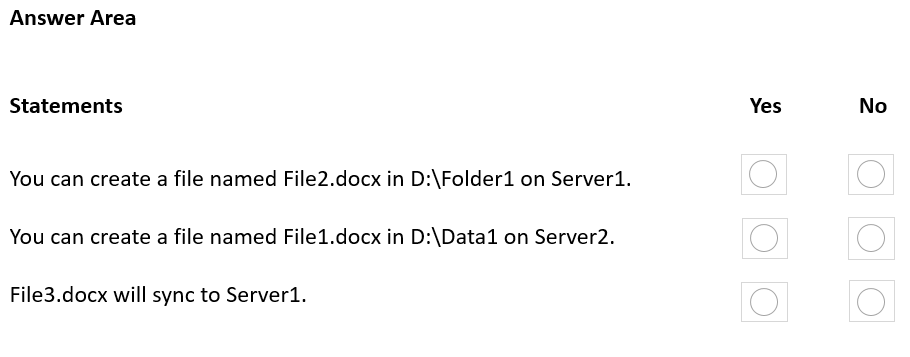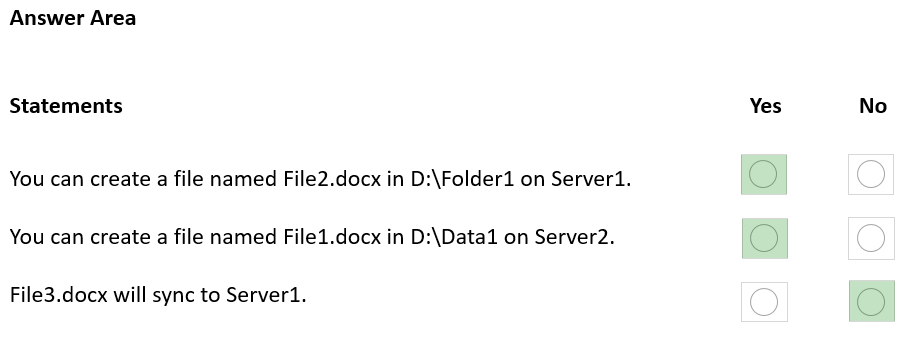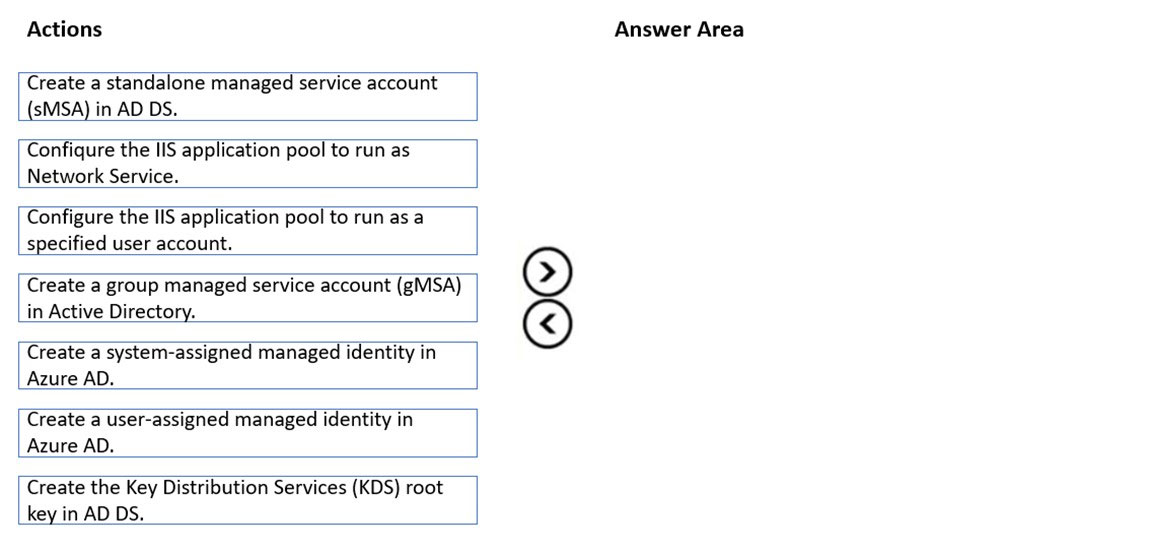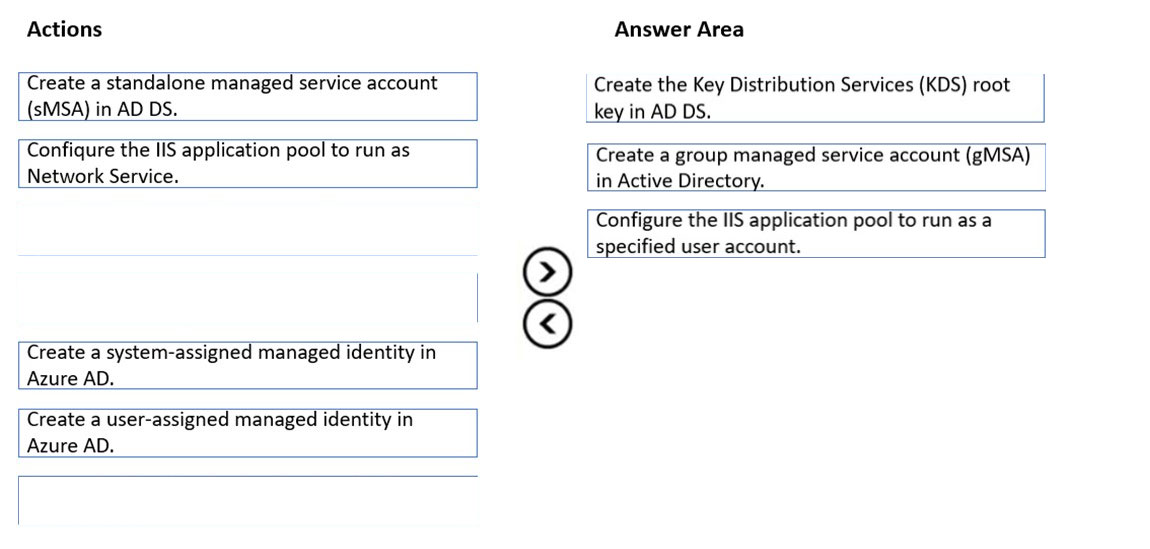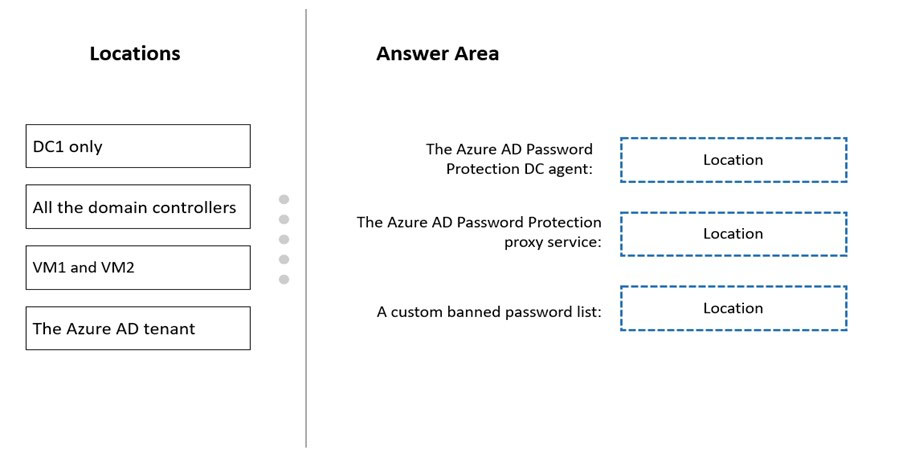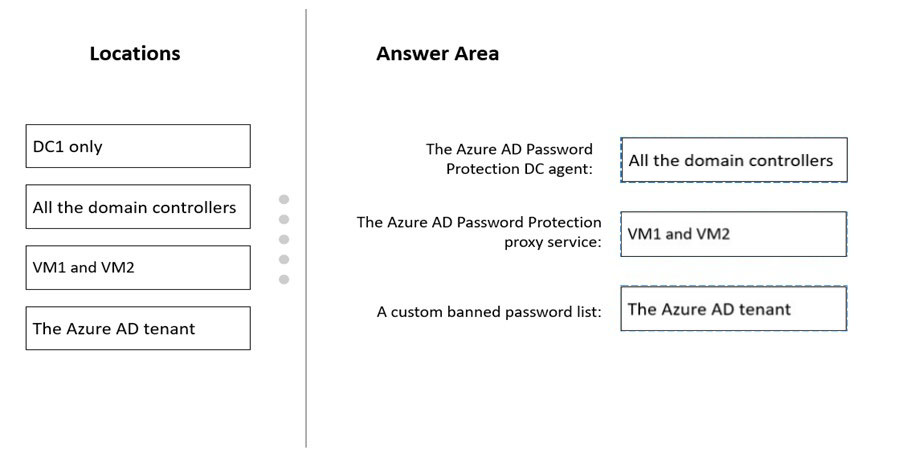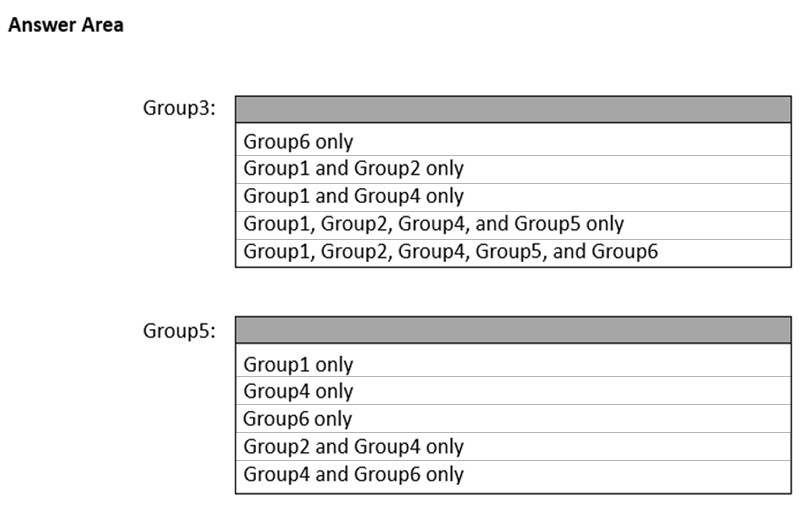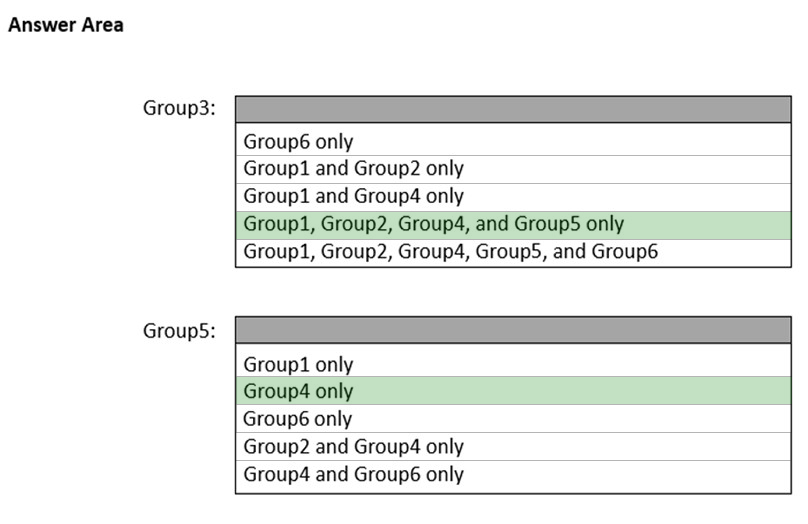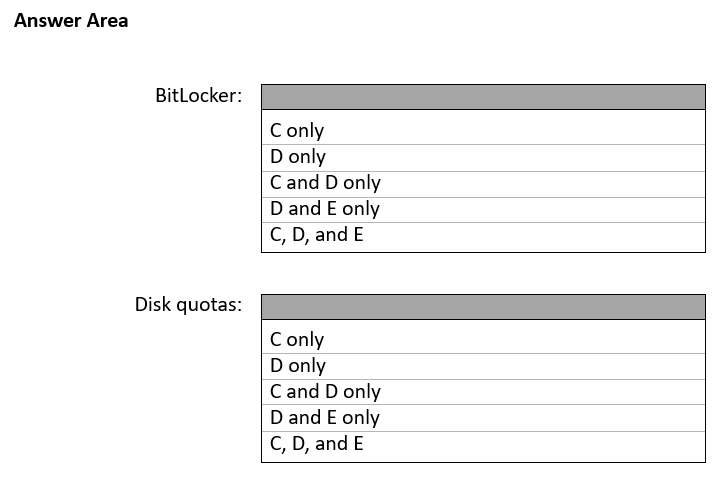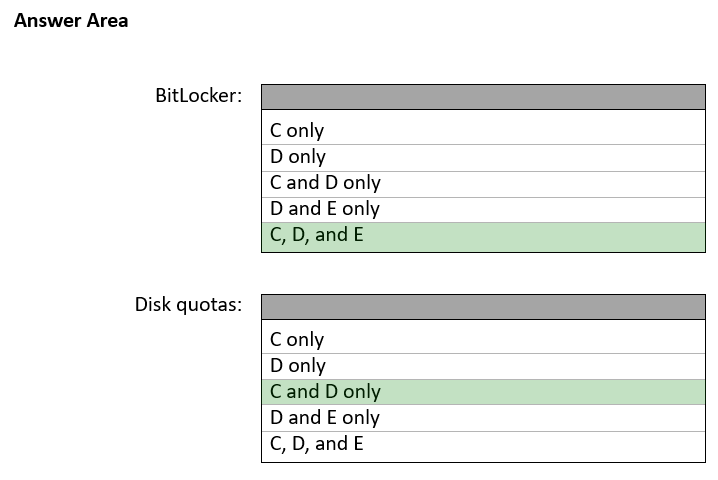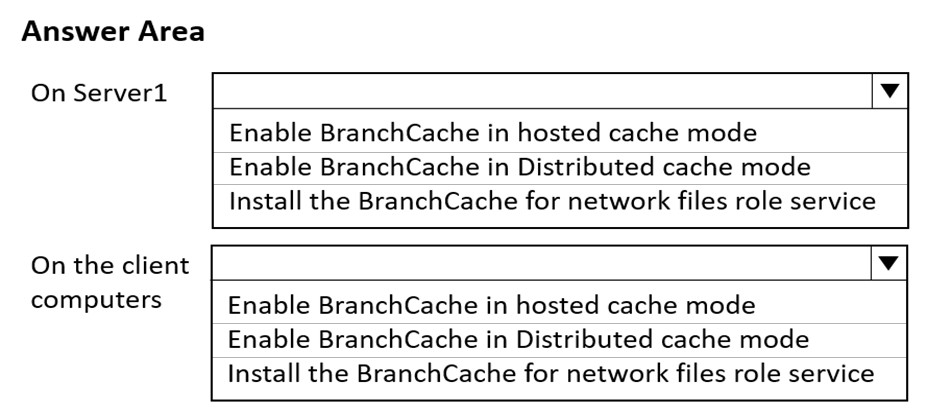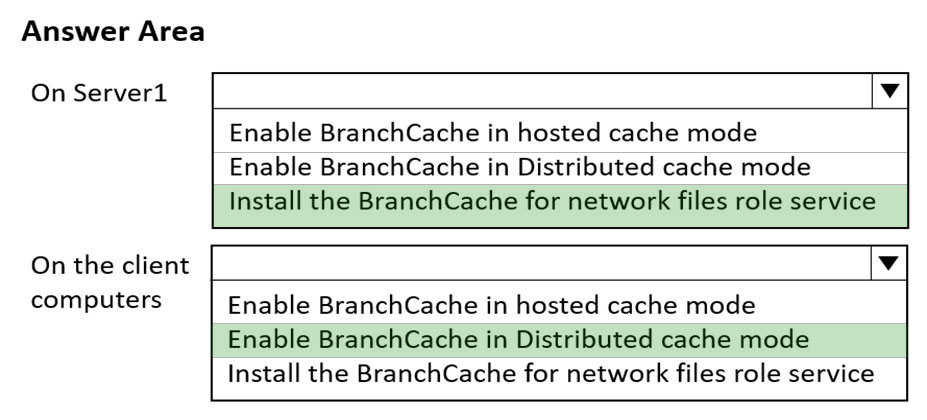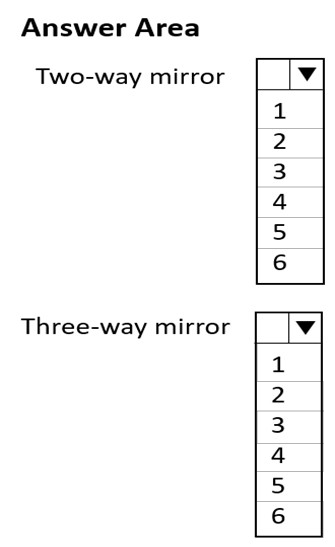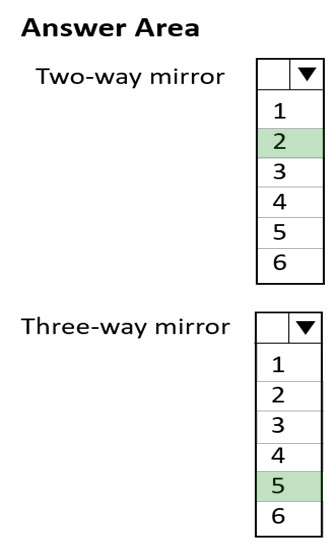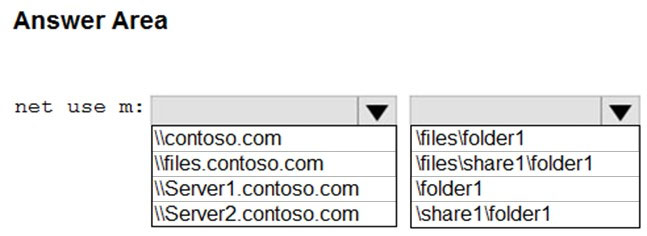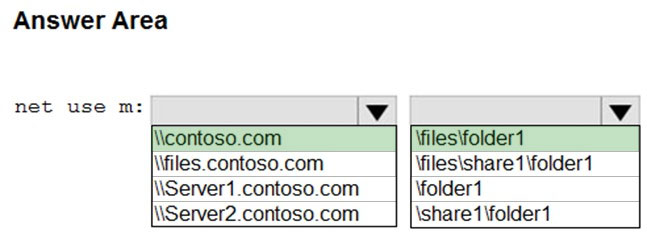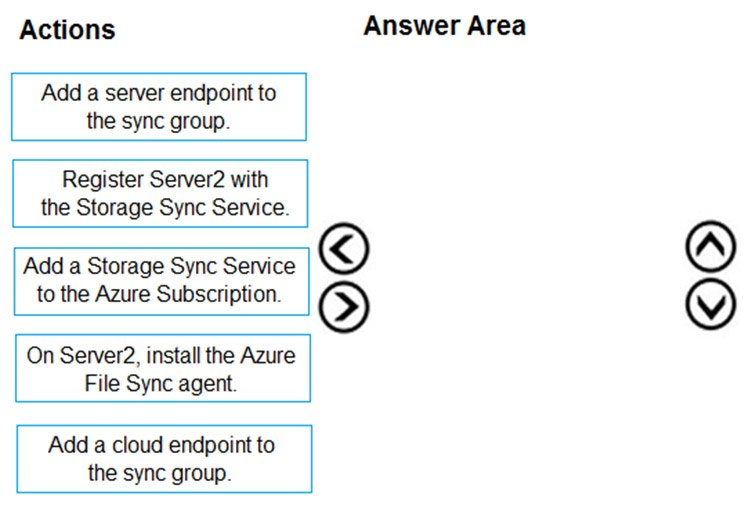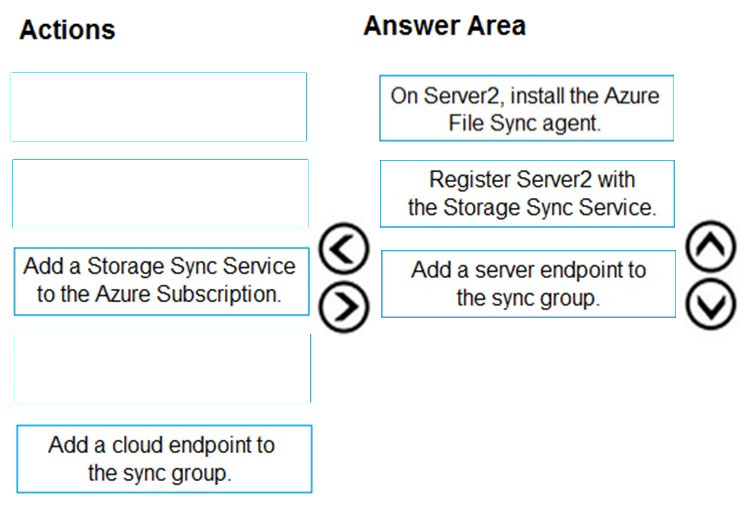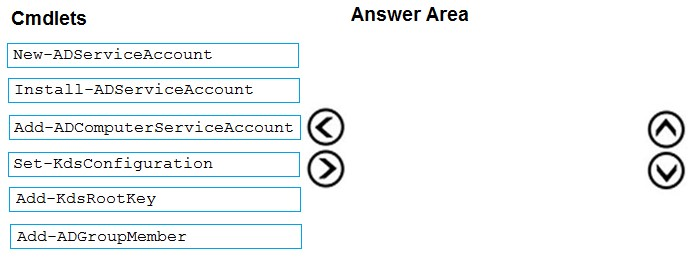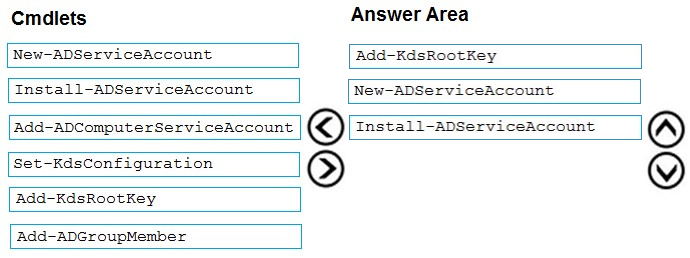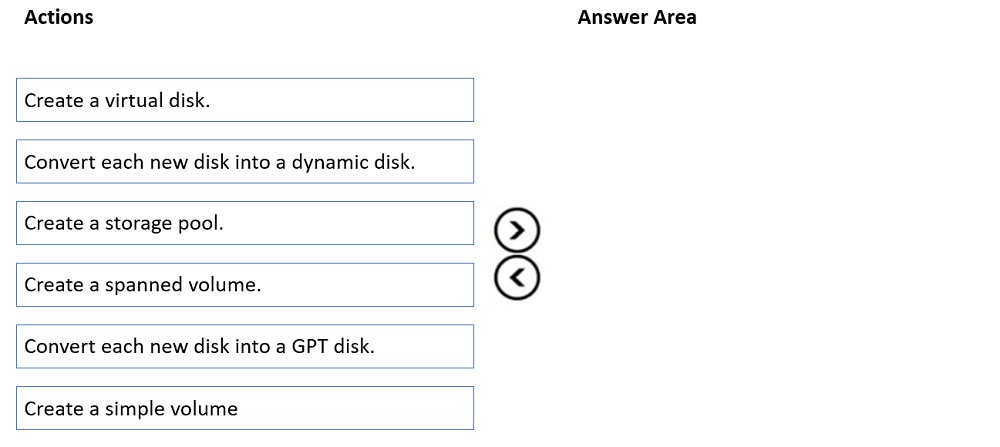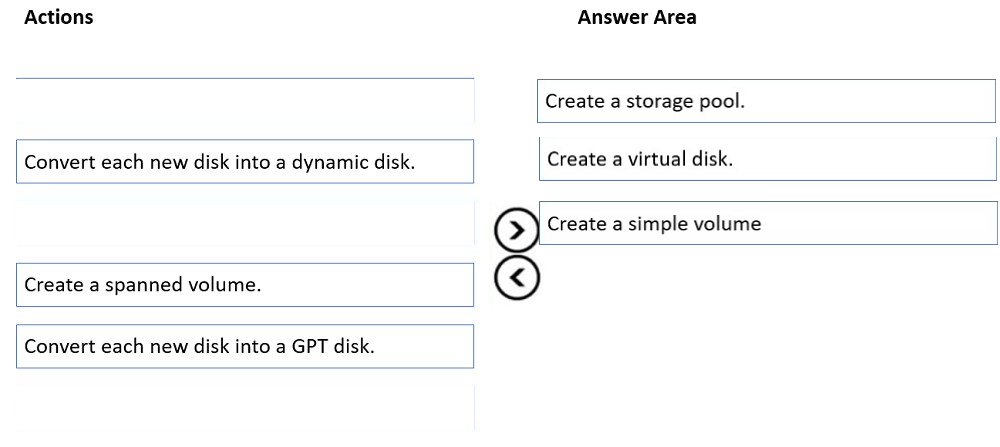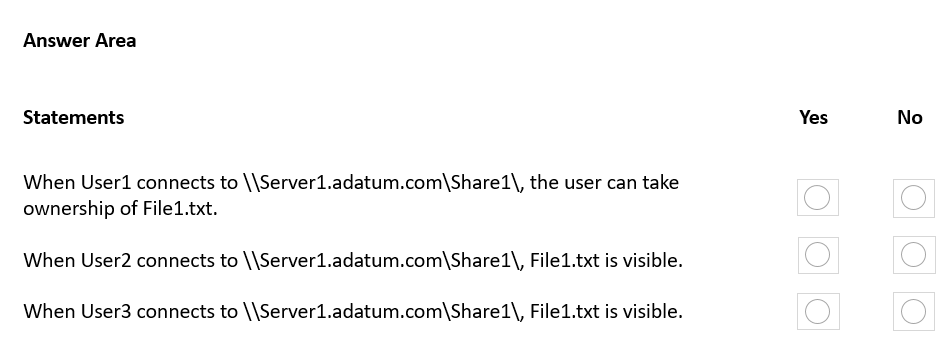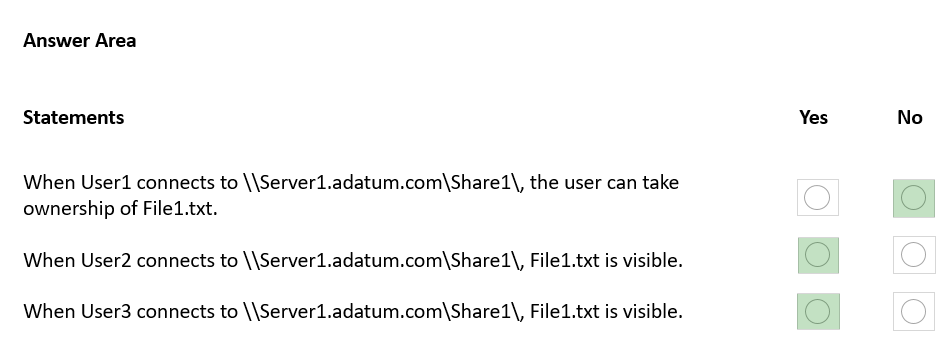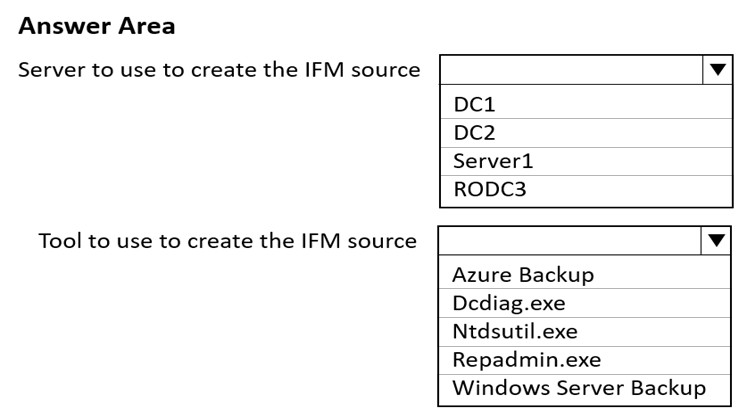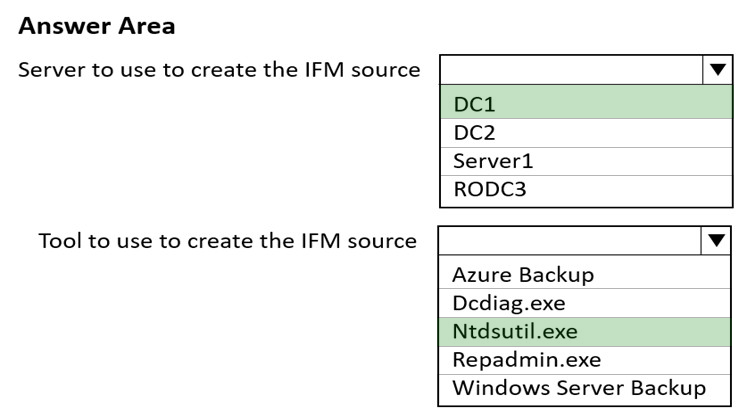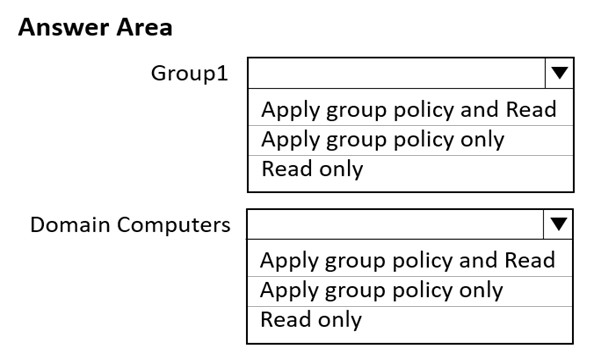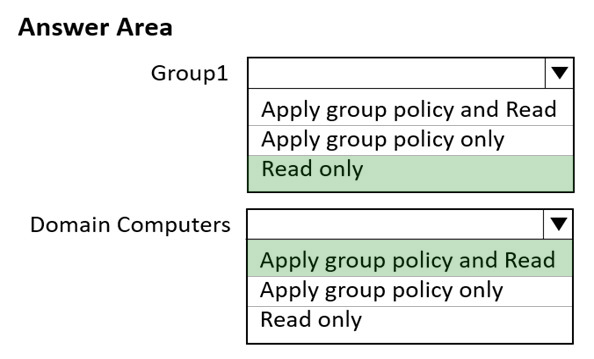AZ-800 Practice Test Free – 50 Questions to Test Your Knowledge
Are you preparing for the AZ-800 certification exam? If so, taking a AZ-800 practice test free is one of the best ways to assess your knowledge and improve your chances of passing. In this post, we provide 50 free AZ-800 practice questions designed to help you test your skills and identify areas for improvement.
By taking a free AZ-800 practice test, you can:
- Familiarize yourself with the exam format and question types
- Identify your strengths and weaknesses
- Gain confidence before the actual exam
50 Free AZ-800 Practice Questions
Below, you will find 50 free AZ-800 practice questions to help you prepare for the exam. These questions are designed to reflect the real exam structure and difficulty level.
You need to configure remote administration to meet the security requirements. What should you use?
A. an Azure Bastion host
B. Azure AD Privileged Identity Management (PIM)
C. the Remote Desktop extension for Azure Cloud Services
D. just in time (JIT) VM access
You need to implement an availability solution for DHCP that meets the networking requirements. Which two actions should you perform? Each correct answer presents part of the solution. NOTE: Each correct selection is worth one point.
A. On DHCP1, create a scope that contains 25 percent of the IP addresses from Scope2.
B. On the router in each office, configure a DHCP relay.
C. DHCP2, configure a scope that contains 25 percent of the IP addresses from Scope1.
D. On each DHCP server, install the Failover Clustering feature and add the DHCP cluster role.
E. On each DHCP scope, configure DHCP failover.
You need to implement a name resolution solution that meets the networking requirements. Which two actions should you perform? Each correct answer presents part of the solution. NOTE: Each correct selection is worth one point.
A. Configure the DNS Servers settings for Vnet1.
B. On DC3, install the DNS Server role.
C. Create a virtual network link in the corp.fabrikam.com Azure private DNS zone.
D. Configure a conditional forwarder on DC3.
E. Enable autoregistration in the corp.fabrikam.com Azure private DNS zone.
F. Create an Azure private DNZ zone named corp.fabrikam.com.
G. Create an Azure DNZ zone named corp.fabrikam.com.
HOTSPOT - You need to configure Azure File Sync to meet the file sharing requirements. What should you do? To answer, select the appropriate options in the answer area. NOTE: Each correct selection is worth one point. Hot Area:
You need to meet the technical requirements for VM3. On which volumes can you enable Data Deduplication?
A. C and D only
B. D only
C. C, D, E, and F
D. D and E only
E. D, E, and F only
HOTSPOT - For each of the following statements, select Yes if the statement is true. Otherwise. select No. NOTE: Each correct selection is worth one point. Hot Area:
HOTSPOT - You need to configure network communication between the Seattle and New York offices. The solution must meet the networking requirements. What should you configure? To answer, select the appropriate options in the answer area. NOTE: Each correct selection is worth one point. Hot Area:
Your network contains an Active Directory Domain Services (AD DS) domain named contoso.com. The domain contains two servers named Server1 and Server2. Server1 contains a disk named Disk2. Disk2 contains a folder named UserData. UserData is shared to the Domain Users group. Disk2 is configured for deduplication. Server1 is protected by using Azure Backup. Server1 fails. You connect Disk2 to Server2. You need to ensure that you can access all the files on Disk2 as quickly as possible. What should you do?
A. Create a storage pool.
B. Restore files from Azure Backup.
C. Install the File Server Resource Manager server role.
D. Install the Data Deduplication server role.
HOTSPOT - You need to meet the technical requirements for Server4. Which cmdlets should you run on Server1 and Server4? To answer, select the appropriate options in the answer area. NOTE: Each correct selection is worth one point. Hot Area:
HOTSPOT - You need to sync files from an on premises server named Server1 to Azure by using Azure File Sync. You have a cloud tiering policy that is configured for 30 percent free space and 70 days. Volume E on Server1 is 500 GB. A year ago, you configured E:Data on Server1 to sync by using Azure File Sync. The files that are visible in E:Data are shown in the following table.Volume E does NOT contain any other files. Where are File1 and File3 located? To answer, select the appropriate options in the answer area. NOTE: Each correct selection is worth one point. Hot Area:
HOTSPOT - You have on-premises file servers that run Windows Server as shown in the following table.You have the Azure file shares shown in the following table.
You add a Storage Sync Service named Sync1 and an Azure File Sync sync group named Group1. Group1 uses share1 as a cloud endpoint. You register Server1 and Server2 with Sync1. You add D:Folder1 from Server1 as a server endpoint in Group1. For each of the following statements, select Yes if the statement is true. Otherwise, select No. NOTE: Each correct selection is worth one point. Hot Area:
HOTSPOT - You have on-premises servers that run Windows Server as shown in the following table.You have an Azure file share named share1 that stores two files named File2.docx and File3.docx. You create an Azure File Sync sync group that includes the following endpoints: ✑ share1 ✑ D:Folder1 on Server1 ✑ D:Data1 on Server2 For each of the following statements, select Yes if the statement is true. Otherwise, select No. NOTE: Each correct selection is worth one point. Hot Area:
DRAG DROP - Which three actions should you perform in sequence to meet the security requirements for Webapp1? To answer, move the appropriate actions from the list of actions to the answer area and arrange them in the correct order. Select and Place:
DRAG DROP - You need to meet the security requirements for passwords. Where should you configure the components for Azure AD Password Protection? To answer, drag the appropriate components to the correct locations. Each component may be used once, more than once, or not at all. You may need to drag the split bar between panes or scroll to view content. NOTE: Each correct selection is worth one point. Select and Place:
What should you implement for the deployment of DC3?
A. Azure Active Directory Domain Services (Azure AD DS)
B. an Azure virtual machine
C. an Azure AD administrative unit
D. Azure AD Application Proxy
You need to meet the technical requirements for Server3. Which users can perform the required tasks?
A. Admin3 only
B. Admin1 and Admin3 only
C. Admin1 only
D. Admin1, Admin2, and Admin3
E. Admin1 and Admin2 only
You need to meet the technical requirements for User1. The solution must use the principle of least privilege. What should you do?
A. Add Users1 to the Server Operators group in contoso.com.
B. Create a delegation on contoso.com.
C. Add Users1 to the Account Operators group in contoso.com.
D. Create a delegation on OU3.
You need to configure the Group Policy settings to ensure that the Azure Virtual Desktop session hosts meet the security requirements. What should you configure?
A. loopback processing in GPO4
B. security filtering for the link of GPO1
C. loopback processing in GPO1
D. the Enforced property for the link of GPO4
E. the Enforced property for the link of GPO1
F. security filtering for the link of GPO4
HOTSPOT - Which groups can you add to Group3 and Group5? To answer, select the appropriate options in the answer area. NOTE: Each correct selection is worth one point. Hot Area:
You are planning the implementation Azure Arc to support the planned changes. You need to configure the environment to support configuration management policies. What should you do?
A. Create a hybrid runbook worker in Azure Automation.
B. Deploy the Azure Monitor agent to all the servers.
C. Deploy the Azure Connected Machine agent to all the servers.
D. Hybrid Azure AD join all the serves.
You need to meet the technical requirements for the site links. Which users can perform the required tasks?
A. Admin1, Admin2, and Admin3
B. Admin1 and Admin3 only
C. Admin1 only
D. Admin1 and Admin2 only
E. Admin3 only
You have five file servers that run Windows Server. You need to block users from uploading video files that have the .mov extension to shared folders on the file servers. All other types of files must be allowed. The solution must minimize administrative effort. What should you create?
A. a Dynamic Access Control central access policy
B. a data loss prevention (DLP) policy
C. a Dynamic Access Control central access rule
D. a file screen
You need to meet the technical requirements for Server1. Which users can currently perform the required tasks?
A. Admin3 only
B. Admin1 and Admin3 only
C. Admin1 only
D. Admin1, Admin2, and Admin3
HOTSPOT - You have a file server named Server1 that runs Windows Server and contains the volumes shown in the following table.On which volumes can you use BitLocker Drive Encryption (BitLocker) and disk quotas? To answer, select the appropriate options in the answer area. NOTE: Each correct selection is worth one point. Hot Area:
You need to meet the technical requirements for VM2. What should you do?
A. Implement shielded virtual machines.
B. Enable the Guest services integration service.
C. Implement Credential Guard.
D. Enable enhanced session mode.
You have a server that runs Windows Server and contains a shared folder named UserData. You need to limit the amount of storage space that each user can consume in UserData. What should you use?
A. Storage Spaces
B. Work Folders
C. Distributed File System (DFS) Namespaces
D. File Server Resource Manager (FSRM)
HOTSPOT - You need to meet the technical requirements for VM1. Which cmdlet should you run first? To answer, select the appropriate options in the answer area. NOTE: Each correct selection is worth one point. Hot Area:
You have an on-premises Active Directory Domain Services (AD DS) domain that syncs with an Azure Active Directory (Azure AD) tenant. Group writeback is enabled in Azure AD Connect. The AD DS domain contains a server named Server1. Server1 contains a shared folder named share1. You have an Azure Storage account named storage2 that uses Azure AD-based access control. The storage2 account contains a share named share2. You need to create a security group that meets the following requirements: ✑ Can contain users from the AD DS domain ✑ Can be used to authorize user access to share1 and share2 What should you do?
A. In the Azure AD tenant, create a security group that has assigned membership.
B. In the AD DS domain, create a universal security group.
C. In the Azure AD tenant, create a security group that has dynamic membership.
D. In the Azure AD tenant, create a Microsoft 365 group.
HOTSPOT - Your company has offices in Boston and Montreal. The offices are connected by using a 10-Mbps WAN link that is often saturated. The office in Boston contains the following: ✑ An Active Directory Domain Services (AD DS) domain controller named DC1 ✑ A server named Server1 that runs Windows Server and has the File Server role installed The office in Montreal contains 20 client computers that run Windows 10. Montreal does NOT have any servers. The company plans to deploy a new line-of-business (LOB) application to all the client computers. The installation source files for the application are in Server1 Apps. You need to make the installation source files available to the client computers in the Montreal office by using the minimum amount of WAN bandwidth possible. What should you do? To answer, select the appropriate options in the answer area. NOTE: Each correct selection is worth one point. Hot Area:
HOTSPOT - You have a server named Server1 that runs Windows Server. Server1 has a just-a-bunch-of-disks (JBOD) enclosure attached. You plan to create a storage pool on Server1 and a virtual disk that will use a mirror layout. You are considering whether to use a two-way or a three-way mirror layout. What is the minimum number of disks required for each type of mirror layout? To answer, select the appropriate options in the answer area. NOTE: Each correct selection is worth one point. Hot Area:
You have a server named Server1 that runs Windows Server. You plan to host applications in Windows containers. You need to configure Server1 to run containers. What should you install?
A. Windows Admin Center
B. Docker
C. the Windows Subsystem for Linux
D. Hyper-V
You have two severs that have the Hyper-V server role installed. The servers are joined to a failover cluster. Both servers can connect to the same disk on an iSCSI storage device. You plan to use the iSCSI storage to store highly available Hyper-V virtual machines that will. support live migration functionally. You need to configure a storage resource in the failover cluster to store the virtual machines. What should you configure?
A. Cluster Shared Volumes (CSV)
B. Distributed File System (DFS) Replication
C. a storage pool
D. a mirrored volume
Your network contains an Active Directory Domain Services (AD DS) forest. The forest contains three domains. Each domain contains 10 domain controllers. You plan to store a DNS zone in a custom Active Directory partition. You need to create the Active Directory partition for the zone. The partition must replicate to only four of the domain controllers. What should you use?
A. ntdsutil.exe
B. Active Directory Sites and Services
C. Set-DnsServer
D. DNS Manager
You have a server named Server1 that runs Windows Server. Server1 has the storage pools shown in the following table.You plan to create a virtual disk named VDisk1 that will use storage tiers. Which pools can you use to create VDisk1?
A. Pool2 only
B. Pool1 only
C. Pool1, Pool2, and Pool3
D. Pool1 and Pool2 only
E. Pool3 only
F. Pool2 and Pool3 only
G. Pool1 and Pool3 only
HOTSPOT - Your network contains an Active Directory Domain Services (AD DS) domain named contoso.com. The domain contains a server named Server1 that has the DFS Namespaces role service installed. Server1 hosts a domain-based Distributed File System (DFS) Namespace named Files. The domain contains a file server named Server2. Server2 contains a shared folder named Share1. Share1 contains a subfolder named Folder1. In the Files namespace, you create a folder named Folder1 that has a target of Server2.contoso.comShare1Folder1. You need to configure a logon script that will map drive letter M to Folder1. The solution must use the path of the DFS Namespace. How should you configure the command to map the drive letter? To answer, select the appropriate options in the answer area. NOTE: Each correct selection is worth one point. Hot Area:
HOTSPOT - Your network contains an Active Directory Domain Services (AD DS) domain named adatum.com. The domain contains a server named Server1 and the users shown in the following table.Server1 contains a folder named D:Folder1. The advanced security settings for Folder1 are configured as shown in the Permissions exhibit. (Click the Permissions tab.)
Folder1 is shared by using the following configurations:
The share permissions for Share1 are shown in the following table.
For each of the following statements, select Yes if the statement is true. Otherwise, select No. NOTE: Each correct selection is worth one point. Hot Area:
Your network contains an Active Directory Domain Services (AD DS) forest. The forest contains three domains. Each domain contains 10 domain controllers. You plan to store a DNS zone in a custom Active Directory partition. You need to create the Active Directory partition for the zone. The partition must replicate to only four of the domain controllers. What should you use?
A. dnscmd.exe
B. Active Directory Sites and Services
C. Set-DnsServer
D. DNS Manager
DRAG DROP - You have two on-premises servers named Server1 and Server2 that run Windows Server. You have an Azure Storage account named storage1 that contains a file share named share1. Server1 syncs with share1 by using Azure File Sync. You need to configure Server2 to sync with share1. Which three actions should you perform in sequence? To answer, move the appropriate actions from the list of actions to the answer area and arrange them in the correct order. Select and Place:
DRAG DROP - You deploy a single-domain Active Directory Domain Services (AD DS) forest named contoso.com. You deploy a server to the domain and configure the server to run a service. You need to ensure that the service can use a group managed service account (gMSA) to authenticate. Which three PowerShell cmdlets should you run in sequence? To answer, move the appropriate cmdlets from the list of cmdlets to the answer area and arrange them in the correct order. Select and Place:
DRAG DROP - You have a server named Server1. You plan to use Storage Spaces to expand the storage available to Server1. You attach eight physical disks to Server1. Four disks are HDDs and four are SSDs. You need to create a volume on Server1 that will use the storage on all the new disks. The solution must provide the fastest read performance for frequently used files. Which three actions should you perform in sequence? To answer, move the appropriate actions from the list of actions to the answer area and arrange them in the correct order. Select and Place:
HOTSPOT - You have an on-premises DNS server named Server1 that runs Windows Server. Server1 hosts a DNS zone named fabnkam.com. You have an Azure subscription that contains the resources shown in the following table.You need to design a solution that will automatically resolve the names of any PaaS resources for which you configure private endpoints in Vnet1. How should you configure the name resolution? To answer, select the appropriate options in the answer area. NOTE: Each correct selection is worth one point. Hot Area:
HOTSPOT - Your network contains an Active Directory Domain Services (AD DS) domain named adatum.com. The domain contains a file server named Server1 and three users named User1, User2, and User3. Server1 contains a shared folder named Share1 that has the following configurations:The share permissions for Share1 are configured as shown in the Share Permissions exhibit.
Share1 contains a file named File1.bxt. The advanced security settings for File1.txt are configured as shown in the File Permissions exhibit.
For each of the following statements, select Yes if the statement is true. Otherwise, select No. NOTE: Each correct selection is worth one point. Hot Area:
After you answer a question in this section, you will NOT be able to return to it. As a result, these questions will not appear in the review screen. Your network contains an Active Directory Domain Services (AD DS) domain named contoso.com. You need to identify which server is the PDC emulator for the domain. Solution: From Active Directory Users and Computers, you right-click contoso.com in the console tree, and then select Operations Master. Does this meet the goal?
A. Yes
B. No
DRAG DROP - You have a server named Server1. You plan to use Storage Spaces to expand the storage available to Server1. You attach eight physical disks to Server1. Four disks are HDDs and four are SSDs. You need to create a volume on Server1 that will use the storage on all the new disks. The solution must provide the fastest read performance for frequently used files. Which three actions should you perform in sequence? To answer, move the appropriate actions from the list of actions to the answer area and arrange them in the correct order. Select and Place:
HOTSPOT - Your network contains a two-domain on-premises Active Directory Domain Services (AD DS) forest named contoso.com. The forest contains the domain controllers shown in the following table.All domain controllers are backed up by using Azure Backup. You create an Active Directory site named Site3. Site1, Site2, and Site3 each has a dedicated site link to the Hub site. In Site3, you install a new server named Server1. You need to promote Server1 to an RODC in child.contoso.com by using the Install from Media (IFM) option. The solution must minimize network traffic. What should you do? To answer, select the appropriate options in the answer area. NOTE: Each correct selection is worth one point. Hot Area:
HOTSPOT - Your network contains a two-domain on-premises Active Directory Domain Services (AD DS) forest named contoso.com. The forest contains the domain controllers shown in the following table.All domain controllers are backed up by using Azure Backup. You create an Active Directory site named Site3. Site1, Site2, and Site3 each has a dedicated site link to the Hub site. In Site3, you install a new server named Server1. You need to promote Server1 to an RODC in child.contoso.com by using the Install from Media (IFM) option. The solution must minimize network traffic. What should you do? To answer, select the appropriate options in the answer area. NOTE: Each correct selection is worth one point. Hot Area:
HOTSPOT - You have a Group Policy Object (GPO) named GPO1 that contains user settings only. You plan to apply GPO1 to a global security group named Group1. You link GPO1 to the domain, and you remove all the permissions granted to the Authenticated Users group. You need to configure permissions for GPOI to meet the following requirements: ✑ GPO1 must apply only to the users in Group1. ✑ The solution must use the principle of least privilege. Which permissions should you grant to Group1 and the Domain Computers group? To answer, select the appropriate options in the answer area. NOTE: Each correct selection is worth one point. Hot Area:
DRAG DROP - You have an on-premises server named Server1 that runs Windows Server. Server1 contains a file share named Share1. You have an Azure subscription. You perform the following actions: • Deploy Azure File Sync. • Install the Azure File Sync agent on Server1. • Register Server1 with Azure File Sync. You need to ensure that you can add Share1 as an Azure File Sync server endpoint. Which three actions should you perform in sequence? To answer, move the appropriate actions from the list of actions to the answer area and arrange them in the correct order.
You have an Azure subscription that contains the storage accounts shown in the following table.In the West US Azure region, you create a storage sync service named SyncA. You plan to create a sync group named GroupA. What is the maximum number of cloud endpoints you can use with GroupA?
A. 1
B. 2
C. 3
D. 4
You have an Active Directory domain that contains a file server named Server1. Server1 runs Windows Server and includes the file shares shown in the following table.When users login to the network they receive the following network drive mappings. • H: maps to server1users%UserName% • G: maps to server1%Department% You need to limit the amount of space consumed by user’s on Server1. The solution must meet the following requirements: • Prevent users using more than 5GB of space on their H: drive • Prevent Accounts department users from using more than 10GB of space on the G: drive • Prevent Marketing department users from using more than 15GB of space on the G: drive • Prevent Customer Service department users from using more than 2GB of space on the G: drive • Minimize administrative effort What should you use?
A. File Server Resource Manager (FSRM) quotas
B. Storage tiering
C. NTFS Disk quotas
D. Group Policy Preferences
Get More AZ-800 Practice Questions
If you’re looking for more AZ-800 practice test free questions, click here to access the full AZ-800 practice test.
We regularly update this page with new practice questions, so be sure to check back frequently.
Good luck with your AZ-800 certification journey!


